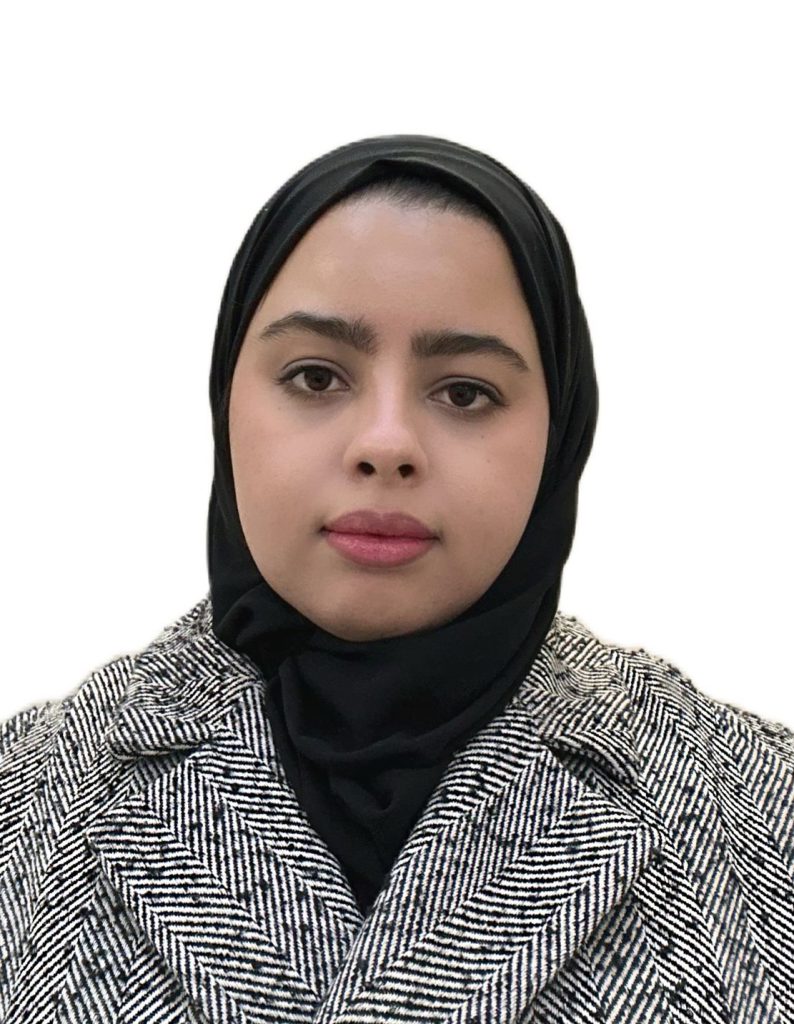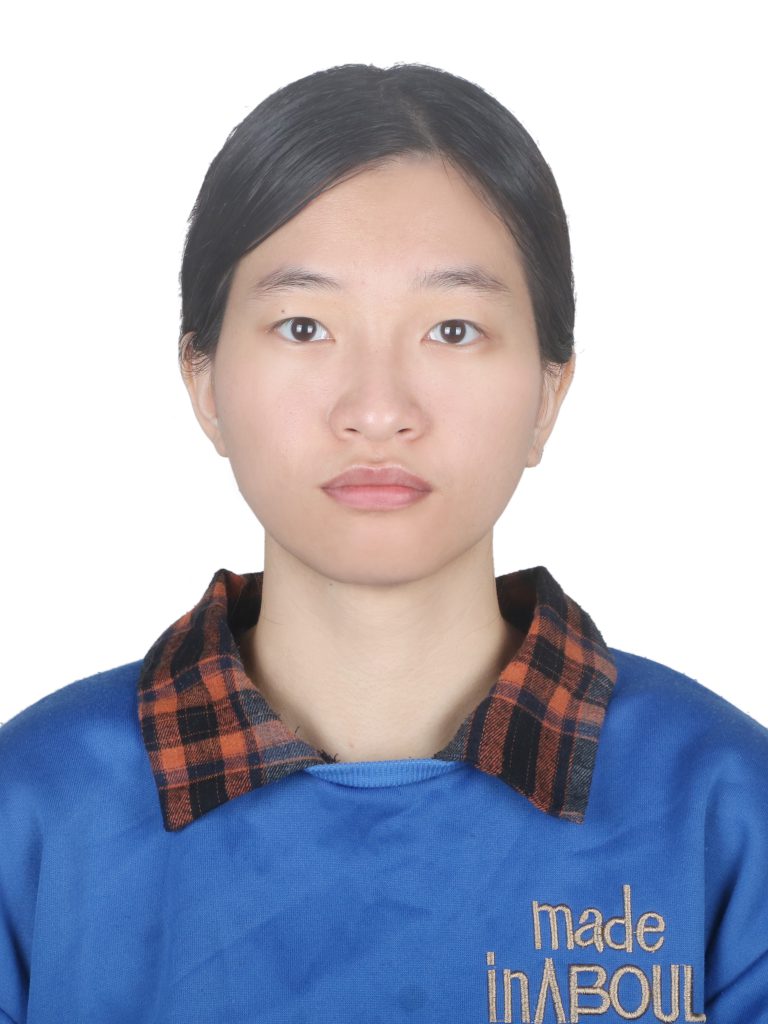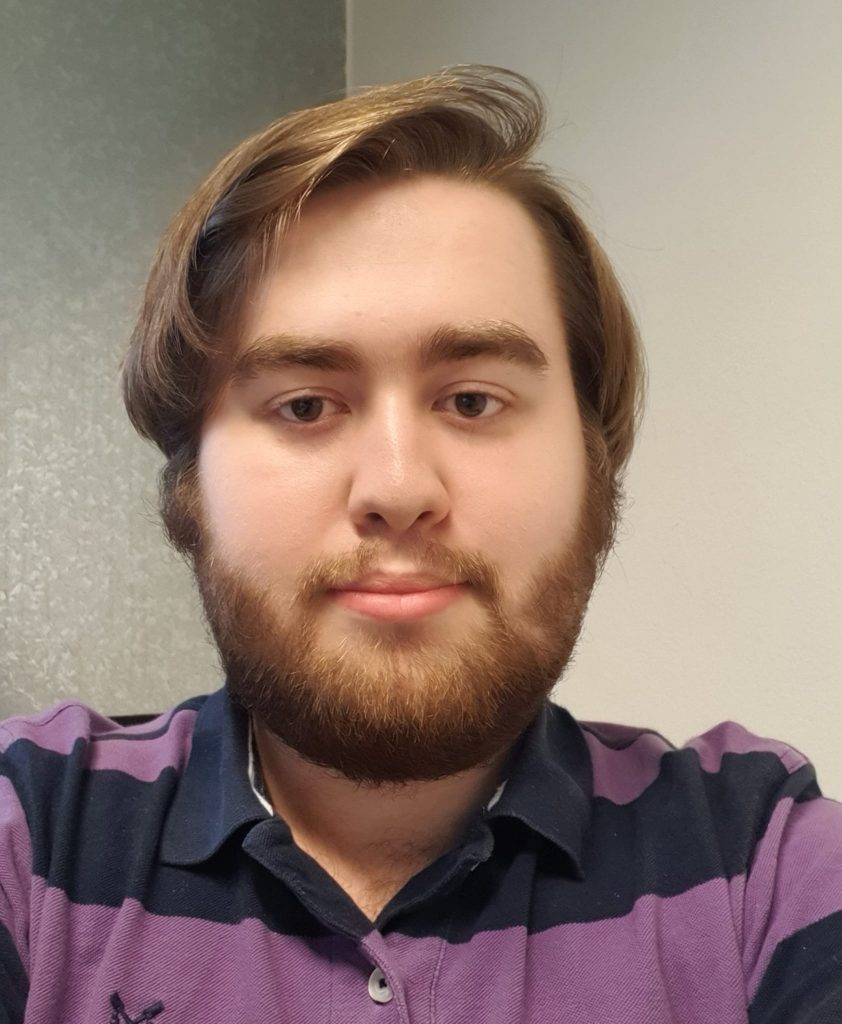Current group members
Leopoldine Parczanny, doctoral student.
My research uses machine learning to improve existing atomistic simulation methods to advance the study of materials at extreme pressures and temperatures. The goal is to find interatomic potentials that can accurately model the structural changes under these conditions at larger length- and time-scales with minimal computational cost. This enables us to determine material properties under conditions like those within planets which cannot be studied in detail experimentally. I focus specifically on modelling hydrocarbons which are abundant in our solar system’s icy objects and play a significant role in furthering our understanding of exoplanets.
Sarah Alnujaim, doctoral student.

My research focuses on exploring heavy fermion compounds, which exhibit unique properties such as unconventional superconductivity and exotic magnetism. The electronic structure of these materials is challenging to describe using first-principles calculations due to strong electron correlation effects that are difficult to capture with standard density functional theory. Therefore, suitable computational methods need to be explored to better understand and model these complex systems, which is the focus of this research. This work aims to enhance our understanding of these materials and support experimental efforts in the field of condensed matter physics.
Yu Cai, doctoral student.

My research focuses on advancing the understanding of dense planetary matter, which leverages machine learning (ML) to address the scarcity of observational data essential for planetary modelling and insights into the formation and evolution of celestial bodies. My work employs ML techniques to develop precise and transferable interatomic potentials specific to conditions within icy planets. ML-driven simulations optimise traditional density functional theory (DFT) calculations, providing faster, larger-scale, and more detailed models of planetary matter. These methods enable accurate predictions of high-pressure phenomena, facilitating comparisons with experimental and astronomical observations. Integrating ML with established physical theories allows for streamlined and precise material property predictions, reducing reliance on traditional experimental and computational methods and supporting rapid advancements in planetary science.
David A. Lewis, doctoral student.

My research focuses on the phases of so-called “planetary ices” and their mixtures at the high pressures and temperatures which are predicted for the interiors of Uranus, Neptune, and exoplanets. In this project we aim to characterise the pressure-temperature-composition phase space of water-ammonia mixtures and derive thermodynamical equations of state, and relations for melting and miscibility. To achieve this, I combine density functional theory results for crystal structures and energies with free energy modelling of the relevant H2O-NH3 mixed phases.
My PhD is jointly supervised by Prof. Andreas Hermann (School of Physics and Astronomy) and Dr. Tetsuya Komabayashi (School of GeoSciences).
Mark Curtis-Rose, MPhys project student, 09/2024-04/2025.
Mark performs Z-method melting simulations of simple molecular systems and their mixtures.
Lewis Hendry, MPhys project student, 09/2024-04/2025.
Lewis develops high-dimensional neural network potentials for molecular systems at extreme conditions, based on density functional theory training data.
Former group members and visitors
Lewis Conway, doctoral student, 09/2017-04/2022.
Lewis’ research concerned itself with the properties of materials under extreme pressures and temperatures as found within planetary interiors. Icy planets are known to contain mixtures of water, methane and ammonia. Understanding how exactly these mixtures behave under high pressure on the atomic scale is an important step in explaining the large scale properties of these bodies, such as why Uranus is significantly colder than what is expected from a homogeneous mixture. Lewis used first principles simulations and crystal structure prediction to investigate these molecular mixtures at conditions which are typically inaccessible experimentally.
Last Seen: Postdoc at University of Cambridge, UK.
See Geo2019, JCP2019, PRB2021, PNAS2021, JCP2021, CC2021, C2022, PRL2022.
Harry Keen, doctoral student, 09/2016-05/2021.
Harry’s research focused on strongly correlated electron systems in heavy-nuclei compounds. These materials can show strange magnetic properties, particularly under pressure, and can exhibit exotic states such as ferromagnetic superconductivity. He worked on understanding the interplay of structural, electronic, and magnetic properties of these materials using electronic structure calculations with density functional theory. Particular challenges emerge from relativistic effects due to the heavy nuclei, and DFT inadequacies in dealing with strong electronic correlation. The overall aim was to develop an understanding of quantum materials and the mechanisms behind the exotic behaviour they exhibit.
Last Seen: Working for Luminance in Cambridge, UK.
See PRB2020, PRB2020a, PRB2021, PNAS2021.
Victor Naden Robinson, doctoral student, 09/2014-01/2020.
Victor’s research focused on the structural, dynamic, and electronic evolution of materials at the extreme conditions found within planetary interiors. His focus was on lightweight molecular compounds commonly found in giant gas planets. His work involved first-principles simulations and crystal structure prediction at high pressures that go beyond what is currently accessible by experiment, particularly investigating mixtures of molecular materials. The overall aim was to improve the current knowledge of the interior structure of, mainly, giant planets and exoplanets.
Last Seen: Postdoc at ICTP Trieste, Italy.
See PNAS2017, PRM2018, JCP2018, PNAS2019, JPCM2020, C2022.
Pattanasak Teeratchanan, doctoral student, 09/2013-12/2017.
Pat’s research focused on the phase evolution in molecular gas hydrates. Such gas-water inclusion compounds have lots of interesting properties e.g. hydrogen hydrate as potential hydrogen storage material, or methane hydrate as high-energy material. Using density functional theory, stable phases based on their relative enthalpies of formation can be predicted. Systems of interest were noble-gas hydrates, diatomic-gas hydrates, and mixed-guest gas hydrates.
Last Seen: Lecturer at Srinakharinwirot University Bangkok, Thailand.
See JCP2015, JPCL2017, JPCL2018, PCCP2018.
Siyu Jin, visiting researcher from Sichuan University, 2021-22.
Siyu combined electronic structure calculations, crystal structure prediction methods, and chemical bonding analyses to predict and explain the properties of new stable metal polyhydrides.
Support from a Chinese Scholarship Council award is gratefully acknowledged.
Sudip Kumar Mondal, HPC Europa3 exchange visitor, 09-12/2020.
Sudip used ab-initio molecular dynamics calculations on molecular mixtures at extreme conditions to understand their properties as found inside giant icy planets.
Support from a HPC Europa3 travel and computing award is gratefully acknowledged.
Dr Xiaofeng Li, visiting researcher from Luoyang Normal College, 2019-20.
Support from a Chinese Research Council award is gratefully acknowledged.
Weiguo Sun, visiting researcher from Sichuan University, 2019-20.
Support by a Chinese Scholarship Council award is gratefully acknowledged.
Bole Chen, visiting researcher from Sichuan University, 2019-20.
Support by a Chinese Scholarship Council award is gratefully acknowledged.
Former undergraduate students
Andrew Lyall, Career Development Summer scholar, 06/2024-09/2024.
Andrew explored the stability and ubiquity of complex structure types amongst lanthanide polyhydrides under pressure.
Guilherme Garcia, Career Development Summer scholar, 06/2024-09/2024.
Guilherme looked into commonalities and differences between polyhydride structure types emerging in 3d-metal hydrides.
Max Donaldson, Career Development Summer scholar, 06/2024-09/2024.
Max investigated the role of magnetism in dense hydrides of transition metals and lanthanides.
Imad Mohd Salleh, SH project student, 01-04/2024.
Imad performed Z-method melting simulations of ammonia-water mixtures.
Conor Baxter, MPhys project student, 09/2023-04/2024.
Conor performed advanced melting simulations of simple metals and planetary ices.
Theo Stölzl, Career Development Summer scholar, 06/2023-09/2023.
Theo studied the properties of the Heisenberg-Landau model, with the aim to study magnetic materials with longitudinal spin fluctuations.
Matteo Peterlongo Acquaviva, Career Development Summer scholar, 06/2023-09/2023.
Matteo benchmarked a neural network package for its suitability to develop transferrable interatomic potentials from molecular dynamics training data.
Jonathan Haehner, Career Development Summer scholar, 06/2023-09/2023.
Jonathan established a data management protocol to facilitate interatomic potential development based on DFT data.
Emese Ungar, Career Development Summer scholar, 06/2023-09/2023.
Emese performed advanced molecular dynamics simulations to determine the melting points of simple metals and molecular compounds.
Nicholas Taylor, SH project student, 01-04/2023.
Nick established pressure-temperature-composition phase diagrams for hydrocarbons, with free energies from the quasi-harmonic approximation.
Rebecca Carstens, SH project student, 01-04/2023.
Rebecca calculated free energies for dense H-C-N-O compounds within the quasi-harmonic approximation.
Matyas Nachtigall, MPhys project student, 09/2022-04/2023.
Matyas continued from his summer internship to develop interatomic potentials for hot dense methane.
Lucas McConnell, Career Development Summer scholar, 06/2022-09/2022.
Lucas explored high-dimensional compositional spaces as relevant for structure prediction of realistic compounds.
Matyas Nachtigall, Career Development Summer scholar, 06/2022-09/2022.
Matyas used neural networks to develop interatomic potentials for hot dense hydrocarbons.
Elspeth Smith, Career Development Summer scholar, 06/2022-09/2022.
Elspeth performed ab initio molecular dynamics simulations to explore thermal excitations and melting in prototypical mantle minerals.
Alex Richardson, MPhys project student, 09/2020-04/2021.
Alex looked into 2D cellular automata akin to Conway’s Game of Life, and used machine learning to classify the space of possible rules for N-state systems.
Mia Dobson, SH project student, 09-12/2020.
Mia used ab initio molecular dynamics to study the phase evolution of generalized hydrocarbons, C-H mixtures, under combined high-pressure and -temperature conditions.
Calum Heggan, MPhys project student, 09/2019-04/2020.
Calum used density functional theory to study the group-XV elements As, Sb, and Bi under pressure, with a specific focus on modelling the appearance (or not) of incommensurate host-guest phases in those elements.
Aleksander Zotev, MPhys project student, 09/2019-04/2020.
Aleksander applied wave-function based electron correlation methods to the high-pressure phases of ammonia hydrates, to understand the propensity of these mixtures to form ionic compounds.
Max Duffy, SH project student, 01/2020-04/2020.
Max investigated the role of spin-orbit coupling on the stability of compressed superhydrides of heavy metal atoms.
Declan Matthews, SH project student, 09/2019-12/2019.
Declan performed ab-initio molecular dynamics simulations on compressed hydrous minerals to capture their high-temperature behaviour and map out their phase diagrams regarding potential superionicity and melting.
Grace Alster, Career Development Summer scholar, 06/2019-09/2019.
Grace used first-principles molecular dynamics calculations to study the miscibility of methane-water mixtures at combined high-pressure and -temperature conditions.
Alex Richardson, Career Development Summer scholar, 06/2019-09/2019.
Alex implemented a numerical heat-bath Monte Carlo algorithm to describe longitudinal fluctuations of classical Heisenberg spins subject to a Landau-like on-site potential.
Jamie Stewart, MPhys project student, 09/2018-04/2019.
Jamie applied crystal structure prediction ideas together with electronic structure calculations to find new high-pressure phases of hydrous minerals.
Kostas Vilkelis, MChemPhys project student, 09/2018-04/2019.
Kostas studied the optical properties of seemingly simple metals under pressure, where they take up complex crystal structures that result in poor metallic or even insulating behaviour.
Gabriel Laude, MChemPhys project student, 09/2018-04/2019.
Gabriel investigated the formation and properties of carbon dioxide hydrates, using wave-function based correlation calculations in the sold state that bypass approximations to the exchange-correlation energy usually made in density functional theory.
Andreas Malekos, SH project student, 01/2019-04/2019.
Andreas modeled quantum oscillation measurements of topological materials, based on relativistic band structure calculations.
See PRB2020.
Angus Lowe, SH project student, 09/2018-12/2018.
Angus studied the potential stabilization of new molecular compounds at pressures found deep inside icy planets using density functional theory, which would help explain their relative depletion in the planets’ atmospheres.
See CC2021.
Augustinas Sukys, SHonours project student, 01/2018-04/2018.
Augustinas worked on the first-principles description of the solids of the superheavy elements, using the augmented plane wave method.
Jake Smith, SHonours project student, 01/2018-04/2018.
Jake studied layered transition-metal hydroxides using electronic structure calculations, with particular interest in the evolution of their magnetic structure under compression.
Jonathan Hunt, MPhys project student, 09/2017-04/2018.
Jonathan studied the stability and properties of incommensurate crystal structures in the group-II elements barium and strontium under pressure.
Jan Kosata, MChemPhys project student, 09/2017-04/2018.
Jan studied the stability of hydrogen hydrates, potential materials for hydrogen storage, using accurate wave-function based electronic structure methods.
See JPCL2018.
Siyu Chen, SHonours project student, 09/2017-12/2017.
Siyu used his own crystal structure prediction code in conjunction with electronic structure calculations to search for new hydrous alumina silicate phases that could become relevant at Earth’s lower mantle conditions.
Jacob Christiansen, Deans’ Vacation summer student, 06/2017-09/2017.
Jacob used first-principles molecular dynamics calculations to study the behaviour of complex ammonia-water mixtures at combined high-pressure and -temperature conditions.
Victor Steinborn, Career Development Summer scholar, 06/2017-09/2017.
Victor used a particular method to self-consistently determine a Hubbard self-energy term that is used to describe the electronic structure of transition metal oxides.
Sebastiaan van de Bund, SHonours project student 01/2017-04/2017, and Career Development Summer scholar 06/2017-09/2017.
Sebastiaan worked on finite-temperature effects in dense hydrous magnesium silicates, to establish their stability along the geotherm in Earth’s mantle purely from first principles.
Aris Ioannou, SHonours project student 01/2017-04/2017.
Aris used finite-displacement phonon calculations to obtain free energies of aluminium silicate hydrates, to establish ternary phase diagrams at geologically relevant conditions.
Padryk Merkl, MChemPhys project student, 09/2016-04/2017.
Padryk studied the formation and stabilization of noble gas hydrates at elevated pressures using periodic Hartree-Fock and local-MP2 calculations.
See JPCL2018.
Louis Headley, SHonours project student, 09/2016-12/2016, and Career Development Summer scholar, 06/2017-09/2017.
Louis compared two density functional theory implementations (using frozen-core and all-electron approaches) for the description of heavy-atom solid state structures. He also studied incommensurate crystal structures that appear in various main-group elements at elevated pressures, using electronic structure calculations to determine their properties and what causes their formation.
Marcin Kirsz, SHonours project student, 09/2016-12/2016, and Career Development Summer scholar, 06/2017-09/2017.
Marcin determined the relative stability of dense hydrous magnesium silicate minerals at various pressures from total energy first principles calculations, and the formation of unusual oxide hydroxide phases at pressures found in Earth’s lower mantle. This will help us understand the transport and storage of hydrogen deep inside Earth.
Gitanjali Poddar, summer project student, 06/2016-09/2016.
Gitanjali performed electronic structure calculations on the stability of hydrous alumina silicate minerals under high-pressure conditions.
Gavin Woolman, MPhys project student, 09/2015-05/2016.
Gavin studied incommensurate crystal structures found in alkali metals under high pressure using density functional theory.
See PRM2018, PNAS2019.
Mikolaj Paliszewski, MPhys project student, 09/2015-05/2016.
Mikolaj studied the interaction of water with hydrophobic substrates, in particular the formation of thin ice films on graphene, using dispersion-corrected density functional theory and a lattice-matching analysis to find strain-free growth directions of various ice crystal structures on the substrate.
Alastair Stewart, EPSRC summer research student, 06/2015-09/2015.
Alastair developed a classical molecular dynamics program that combined Lennard-Jones and Tersoff potentials to describe multi-component hydrogen-bonded systems.
Emily Gould. Senior Honours project student, 01/2015-05/2015.
Emily worked on the project “Relativistic Effects in Solids”, and compared two density functional codes to compare the pseudopotential method to all-electron calculations in crystalline solids of heavy elements.
Viwan Jarerattanachat. MSc project student, 06/2014-08/2014.
Viwan worked on the project “First principle structure prediction”, with a focus on bulk silicon and tin, for her MSc in Theoretical Physics.
Emma C. Gerritse, TU Delft. Research exchange visitor, 03/2014-08/2014.
Emma worked on the project “A computational study of lattice optimization and anion disorder in perovskite oxynitride SrNbO2N“, as part of her MSc programme at TU Delft, Netherlands.